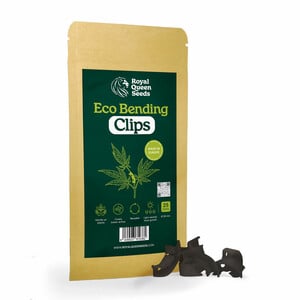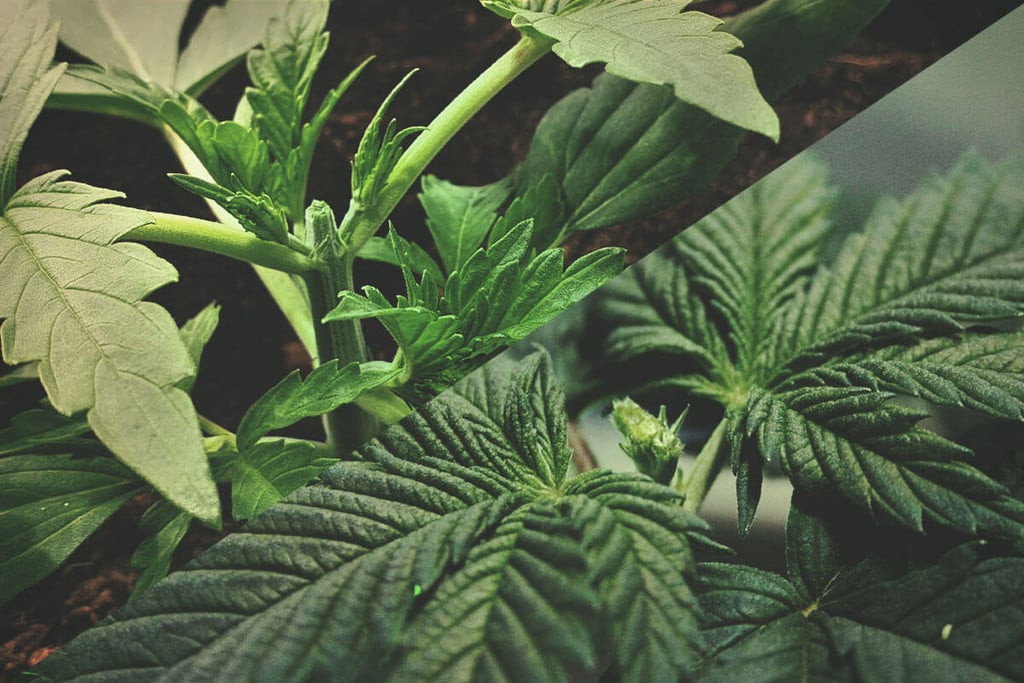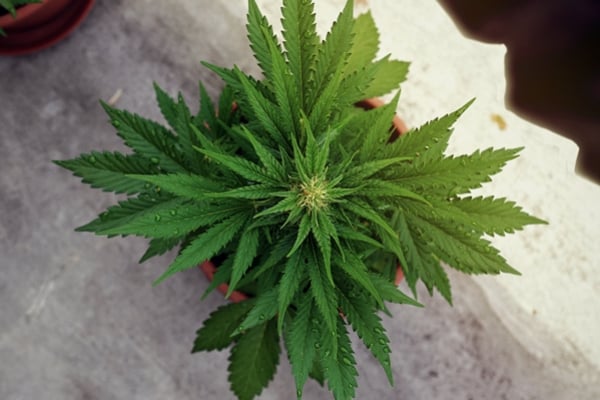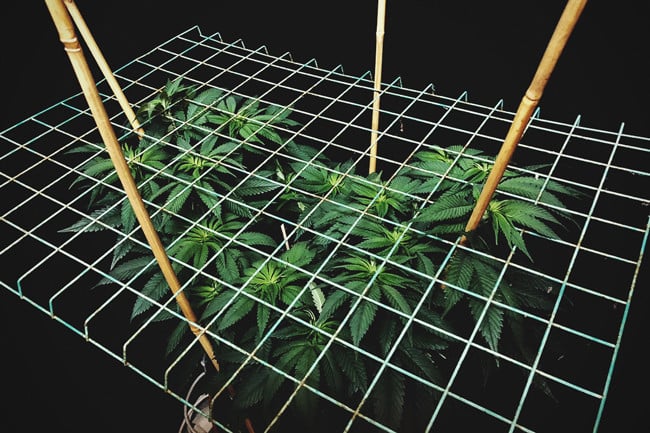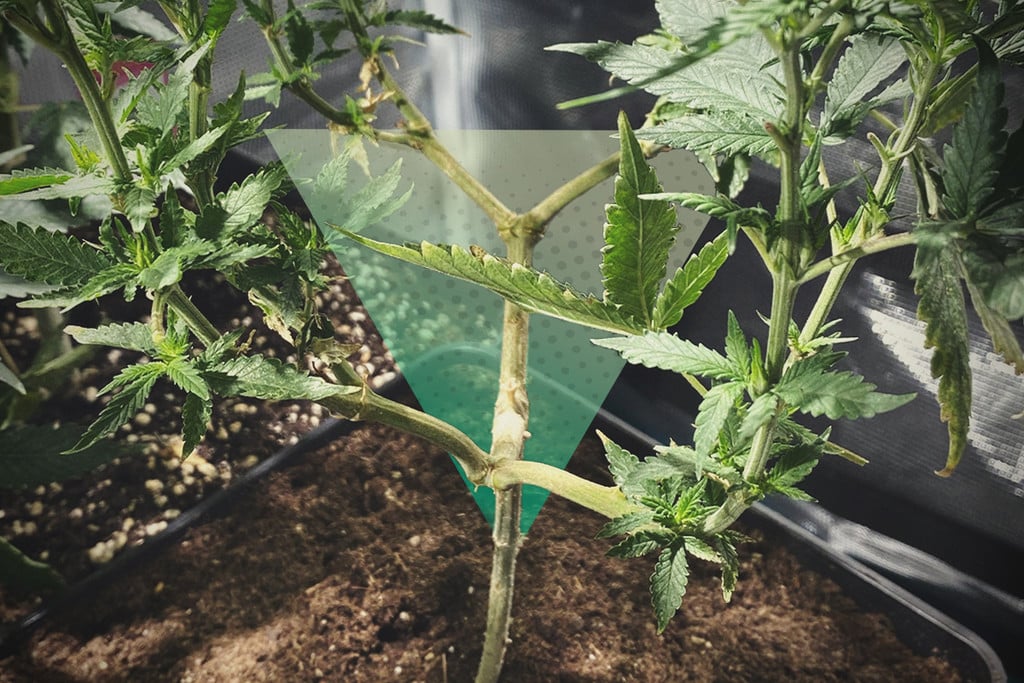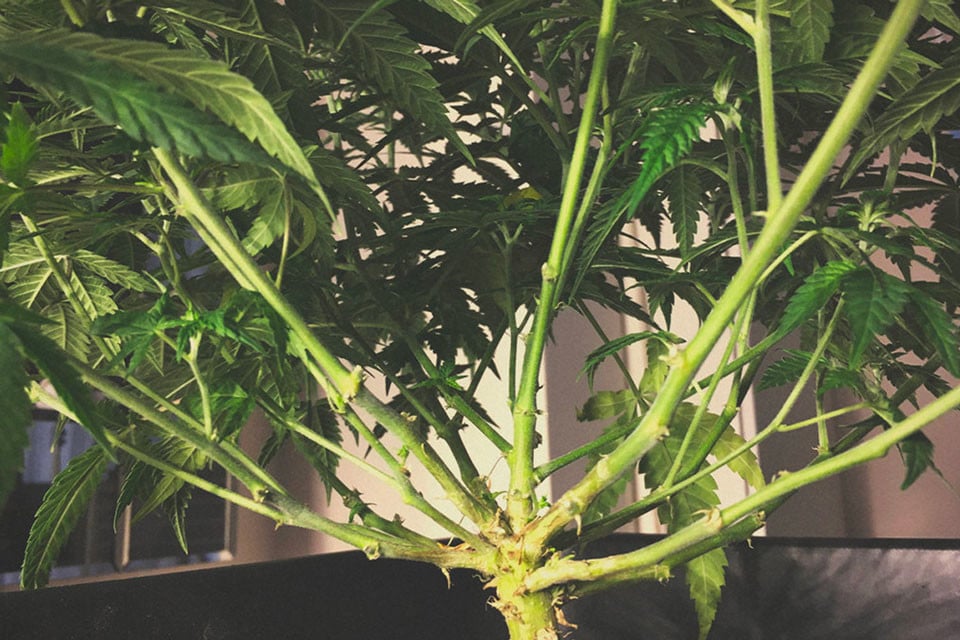.
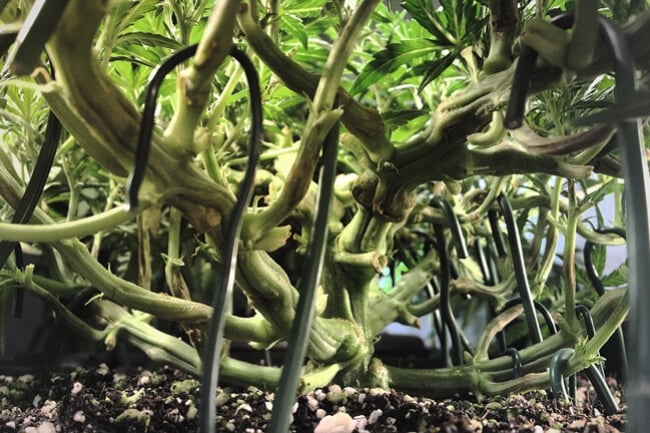
Cannabis Super Cropping: How, When, And Why To Do It
Cannabis growers are always on the lookout for ways to improve their yields. Super cropping, when performed properly, not only drives up a plant's production potential, but can also boost its resin production and potency.
Contents:
Super cropping is an advanced cannabis training technique that can deliver really impressive yields. That said, it can be daunting for growers who have never tried it before, and can potentially result in disaster if not done correctly. Broken branches not only drive down yields, but also increase the risk of disease in your garden.
Luckily, with the right tips and a bit of patience, even inexperienced growers can reap the rewards of super cropping their cannabis plants. In this article, we’ll walk you through what super cropping is, why and when to do it, and how it works.
WHY SUPER CROP CANNABIS?
Super cropping is a high-stress training technique that involves pinching and bending branches to damage the inner fibers while leaving the outer lining intact.
While it might seem counterintuitive, this kind of stress actually benefits your plants, encouraging more vigorous vegetative growth and better bud development. In response to predators and other forms of stress, female plants naturally produce cannabinoid and terpene-rich trichomes. Thus, the damage you inflict when super cropping is believed to trigger the plant’s defense mechanisms, causing it to take up more nutrients, fuelling its growth.
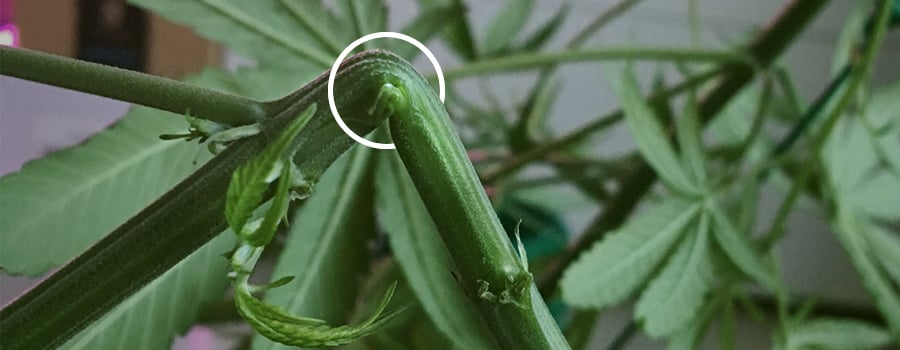
On a secondary level, super cropping is a way to manipulate how your plants grow. After they've just been cropped, your plant's branches will seem weak and flimsy; you can take advantage of this and tie them down (similar to how you would when using LST) to teach the plant to grow in a particular direction.
As they recover, your plants will form thick, hard knots at the crop points. During flowering, these knots will help support the weight of your plant's buds, and the overall structure of the plant itself.
WHAT YOU NEED TO SUPER CROP
- Your fingers
- String or zip ties to tie down branches and hold them in place
- Garden stakes/dowels
- Duct tape
- Patience
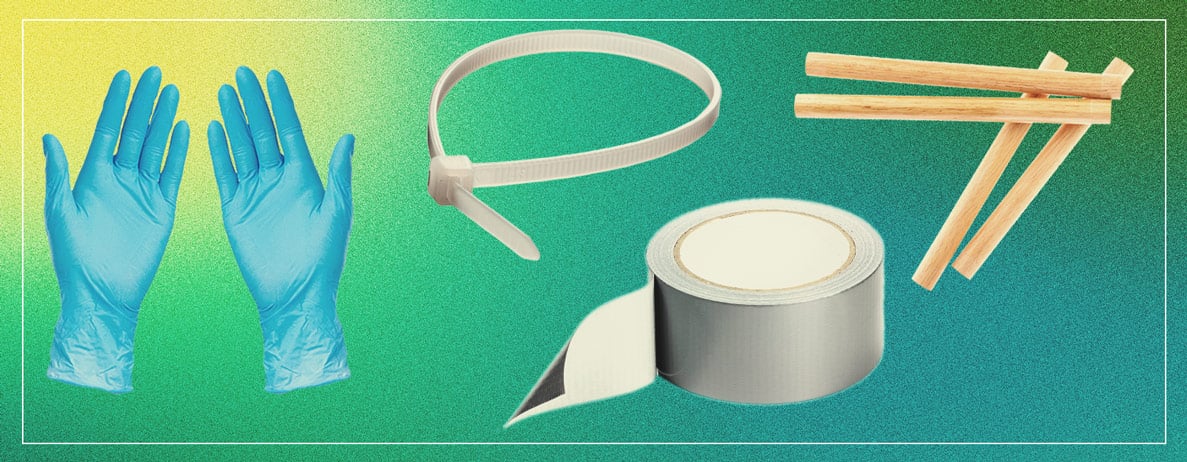
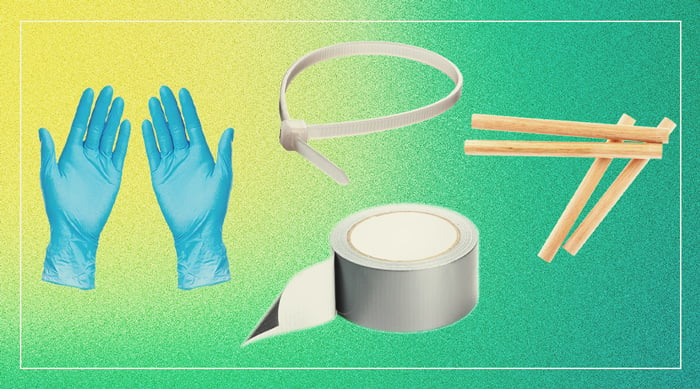
WHEN TO SUPER CROP
If you’re a rookie grower, we recommend super cropping your plants just once during the late vegetative stage, ideally 3–7 days before you flip them over to flowering. This will give them time to recover from the stress of cropping before they start focusing their energy on developing buds.
Remember to never super crop plants dealing with pest infestations, nutrient deficiencies, or any other type of negative stress. Super cropping is a very stressful technique, and your plants need to be extremely healthy to be able to cope with it.
If you have some experience with this technique, we recommend super cropping a second time within the first two weeks of flower. This is because plants tend to exhibit a final period of explosive growth at the beginning of bloom (known as "stretching"). After that, let your plants recover and feed/water them as usual. You should notice an increase in bud sites along the cropped branches.
Download our Pro Growing Guide for in-depth super-cropping, LST, and defoliation methods that sculpt an even canopy and drive massive yields.
Free Advanced
Growing Guide!
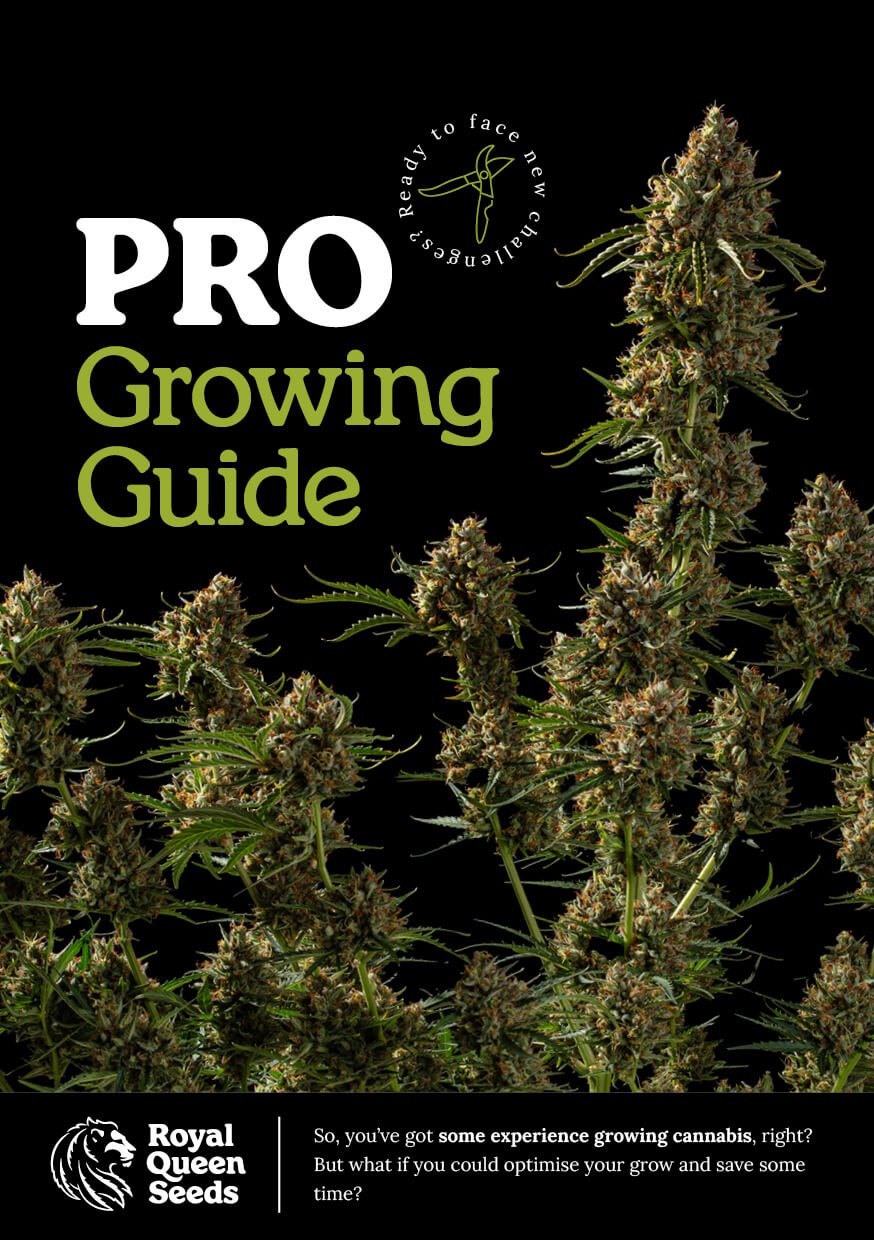
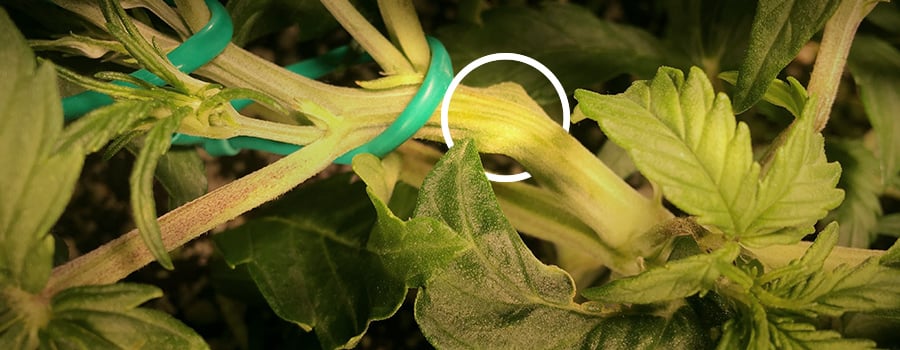
As you become more familiar with super cropping, feel free to experiment more with this technique. You can super crop in different ways, and at different times, during your plant's life cycle. Some growers find super cropping early on in the vegetative stage helps spark rapid growth and bigger, more structurally sound plants.
If you're super cropping to help your plants better support their buds, we recommend doing so as soon as they grow their third node. Together with a bit of LST, you'll end up with big, strong plants come flowering that are ready to support even the densest of flowers.
On the other hand, you can use super cropping in the late vegetative and early flowering phases if you want to even out your canopy and boost resin production for a bigger, more aromatic, and ultra-potent harvest.
HOW TO SUPER CROP YOUR CANNABIS PLANTS
Super cropping freaks out a lot of rookie growers, and for somewhat good reason; it takes experience and skill to perform this technique, and a simple mistake could seriously stunt a plant’s growth. Luckily, with the right knowledge, you can reap the rewards of this technique on your next grow.
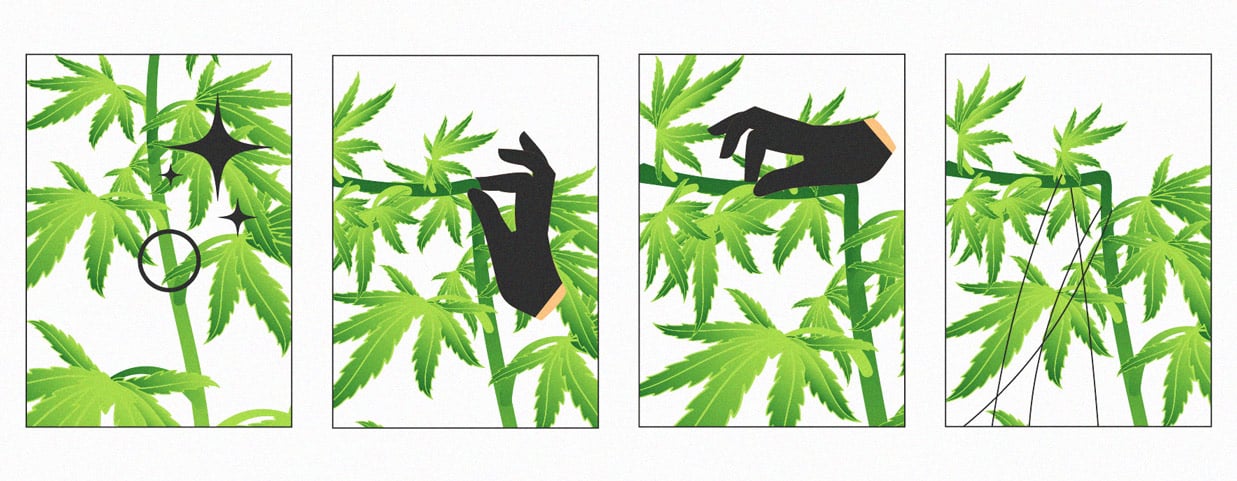
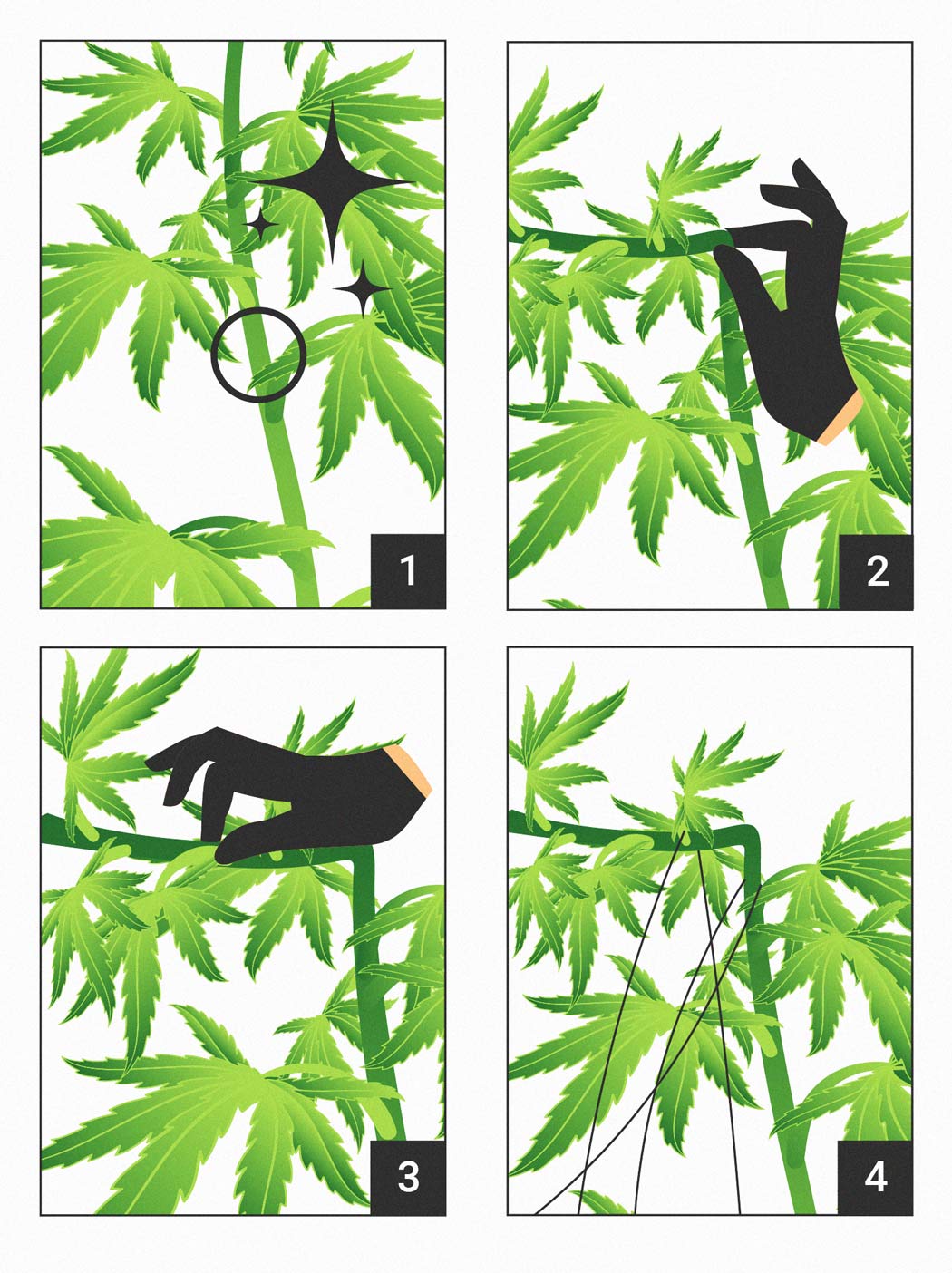
- Determine which branches to crop. We recommend cropping branches that are mature, but not old or woody. Any branches that are notably taller than others are a good place to start, as super cropping will lower them to create a more even canopy.
- Start by cropping the bottom of a branch. You want to squeeze it gently between your thumb, fore, and index fingers while simultaneously bending it slightly in the direction you want it to grow. The goal is to crush the core of the branch so you can manipulate it to your needs. Remember to be gentle; it can help to roll the branch between your fingers for several seconds to make it more pliable, then gently bend it in the desired direction.
- Work your way up the branch, leaving a few centimetres between each crop. We don’t recommend cropping anything above 2–3 nodes from the tip.
- Once your branch has been cropped and is leaning in the direction you want it to, it’s time to tie it down at each crop site using string or zip ties.
Remember, the key to super cropping is finding that sweet spot where the inside of the branch feels soft and malleable while the outside remains completely intact. After super cropping, your branches/plant should lean more to one side, and the tips should be bent at roughly 90°. If you’re a rookie, it might take some trial and error to get this right.
HOW TO FIX BROKEN BRANCHES
If you’re fairly inexperienced, you’re likely to break a branch (or a few) when first attempting to super crop your plant. If this happens, don’t freak; while it’s certainly a bummer, you may be able to rectify the situation.
Tape around the tear or snap with duct tape to create a sort of makeshift bandage. If need be, support the branch by tying it to another nearby branch or to a garden stake. You should be able to remove the bandage tape within a week.
As your plant heals, it will grow big knots in all the spots you bent/snapped (including those you broke). This is completely normal (and beneficial!).
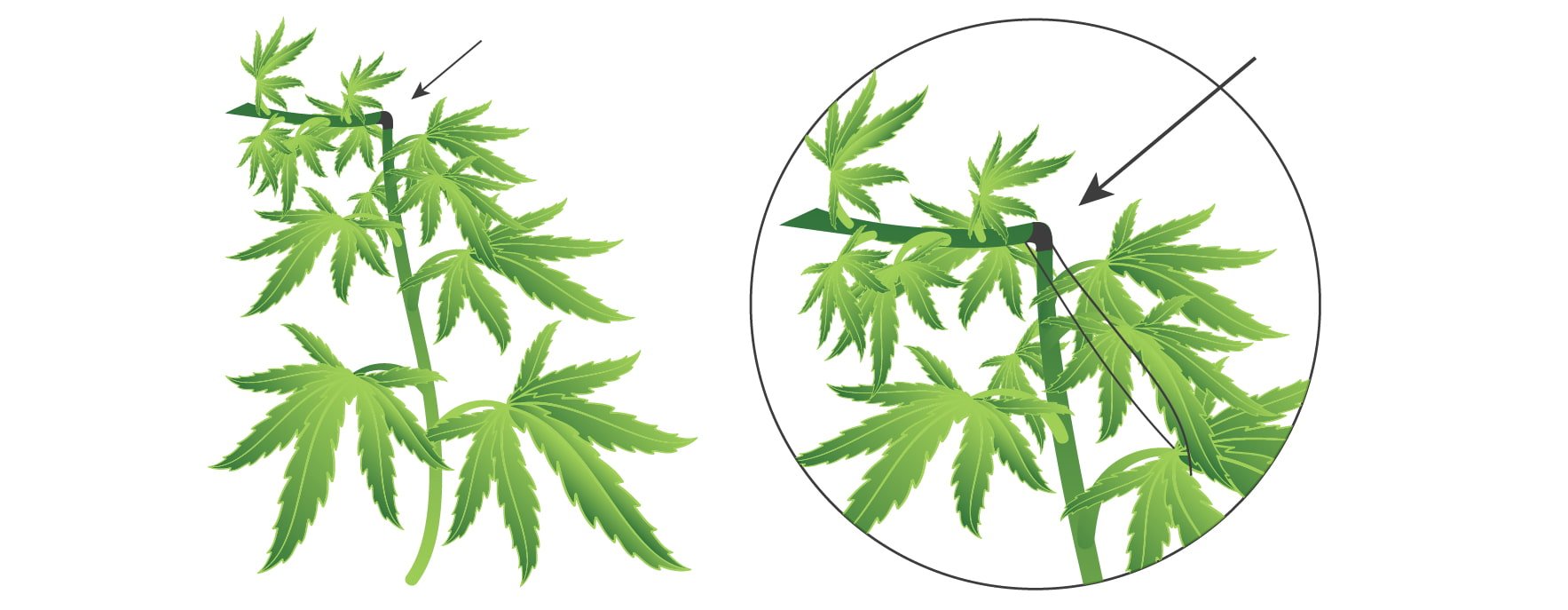
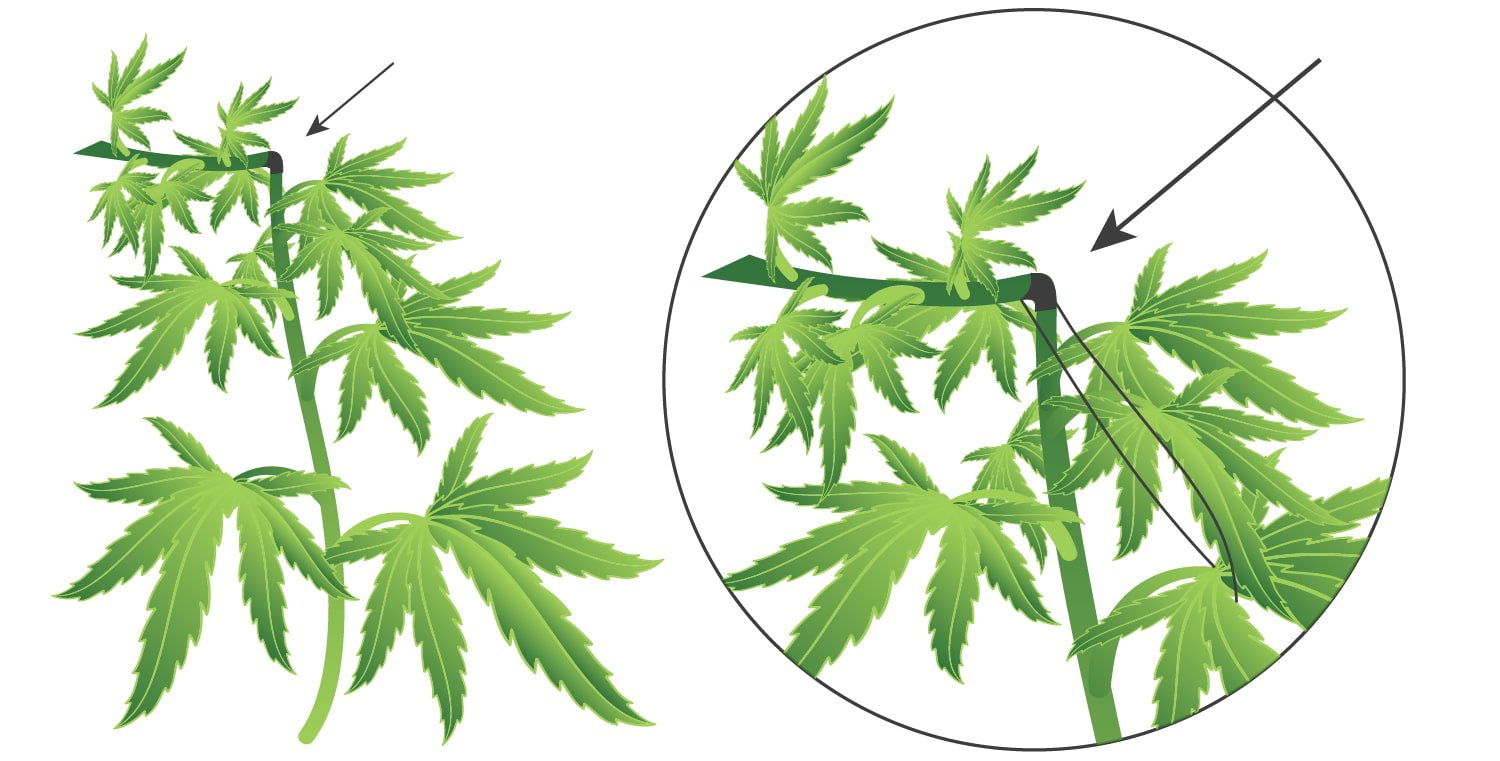
SUPER CROPPING, MAIN-LINING, AND LST: A WINNING COMBINATION
For even bigger yields, use super cropping together with other techniques like main-lining and LST. The former involves creating a “manifold”, which essentially means topping plants to give rise to two main stems from a single node. The latter involves bending the resulting stems to grow parallel to the ground, increasing light penetration and controlling vegetative growth in the process. By combining all of these techniques, advanced growers can make the most of their space and resources to develop truly spectacular results from impressive, albeit strange-looking, cannabis plants.
THE END RESULT: BIGGER, BETTER YIELDS
Super cropping, while daunting, is a great high-stress technique that can have a massive impact on the size and quality of your yield (as long as you know what you’re doing). Use this article as a guide during your next grow, and see the benefits of super cropping for yourself!


























